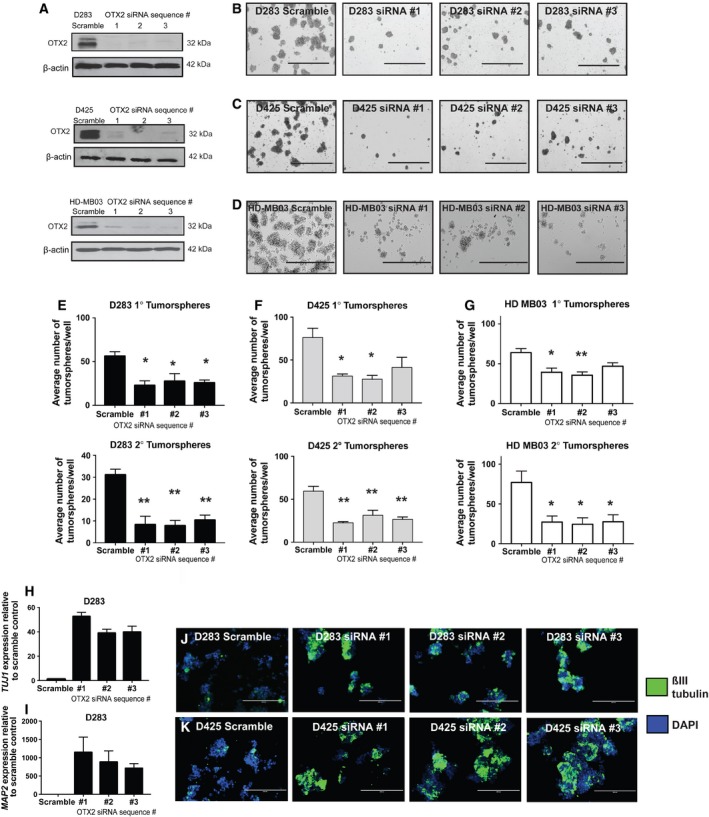Figure 1.

Knockdown of OTX2 in Group 3 and Group 4 MB tumorspheres decreases self‐renewal and increases differentiation. (A) Immunoblot validation of OTX2 knockdown in tumorspheres from the D283 and the D425 MB cell lines as well as the recently derived HD‐MB03 cell line using three independent siRNA sequences relative to scramble siRNA. β‐Actin serves as a loading control. (B–D) Representative images of tumorspheres at secondary passage following OTX2 knockdown in D283 (B), D425 (C), and HD‐MB03 (D) cells. Scale bar: 1000 μm. (E–G) Quantification of primary (upper) and secondary (lower) tumorsphere number in D283 (E) D425 (F) and HD‐MB03 (G) tumorspheres following OTX2 knockdown. Error bars: SEM. P < 0.05*, P < 0.01**. For all experiments, N = 3 or N = 4 biological replicates or independent transfections for each siRNA. (H, I) TUJ1 (βIII‐tubulin) (H) and MAP2 (I) expression following OTX2 knockdown using three siRNA sequences in D283 tumorspheres by qPCR. Error bars: SEM. N = 3 biological replicates. (J, K) Immunofluorescent staining of D283 (J) and D425 (K) tumorspheres for βIII‐tubulin following OTX2 knockdown using three siRNA sequences. Scale bar: 200 μm.
